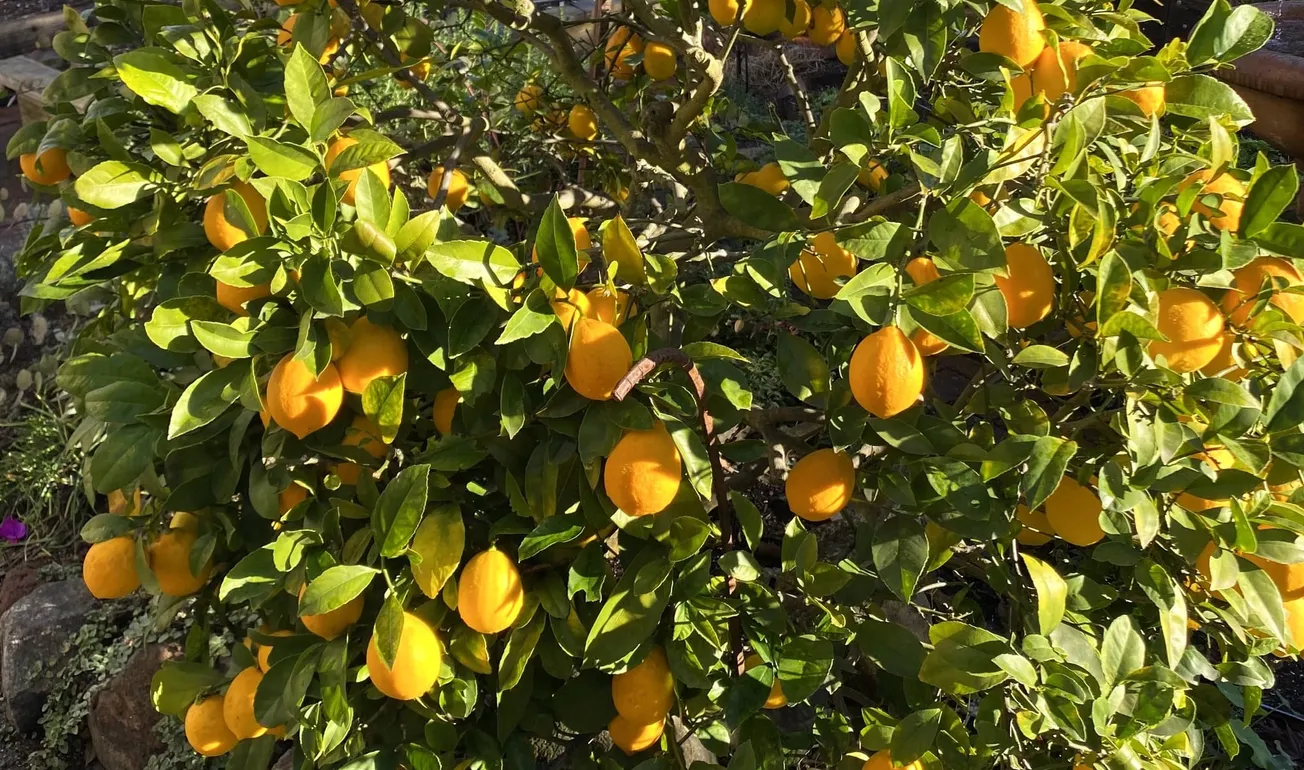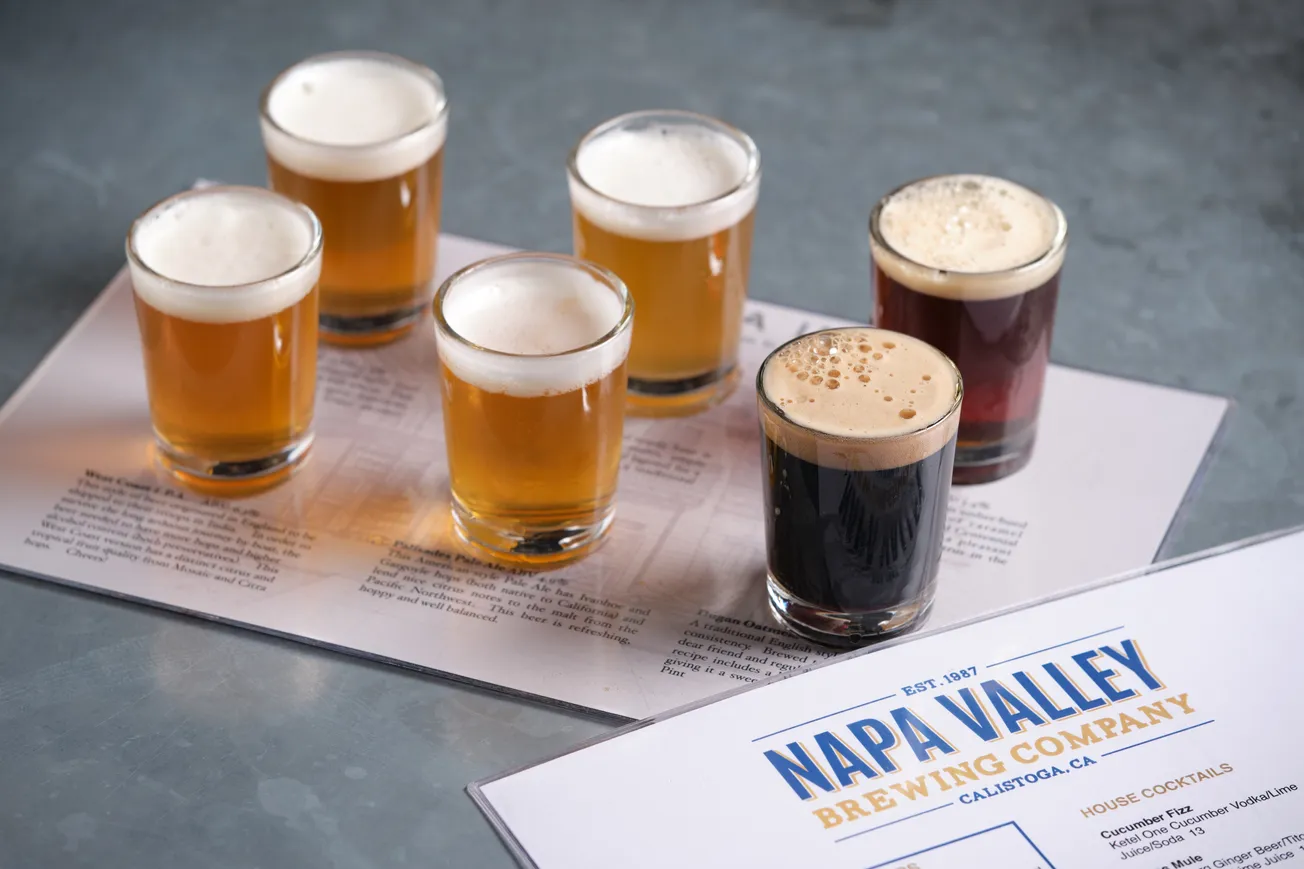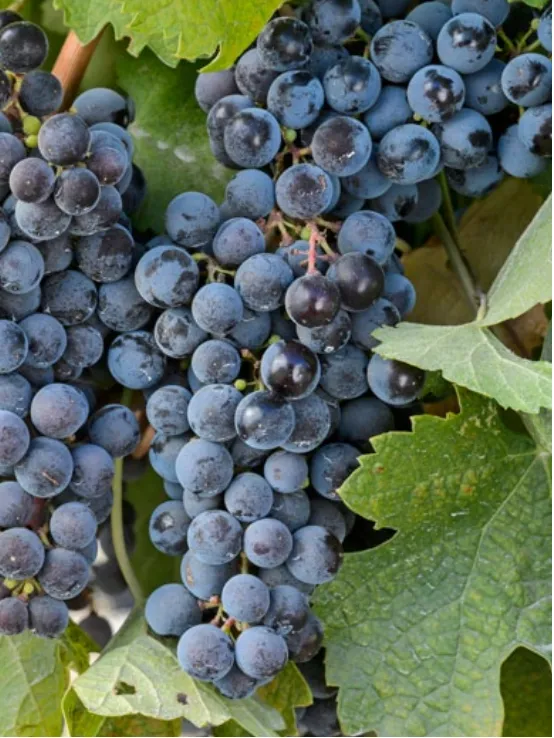The Golden Globe goes to… Meyer Lemon.
Once past the holiday meals of Christmas and New Year’s Eve, I am ready for spring and colorful blooms popping out. Unfortunately, the earth has not yet tilted back enough to bring back 12 hours of sun to the Napa Valley. This time of year my garden looks brown and abandoned except for my citrus trees.
I have a Cara Cara orange and an “Owari” Satsuma mandarin, but it is really the deep golden globes of my Meyer lemon that help keep me from despair in late winter.
Meyer lemons were made famous in America by Alice Waters at her Chez Panisse restaurant in Berkeley during the 1980s. In her book Chez Panisse Fruit she wrote, “To those who have never tasted them, our recurring insistence on Meyer lemons may seem like an irritating California eccentricity, but I don’t know many people who have tried one without getting hooked.” Many also credit Martha Stewart with spreading the fruit’s fame nationally; if you Google her name and “Meyer lemon” you will find a long list of recipes from roast chicken to cakes, tarts, radicchio salads and more, all uplifted by a squeeze of Meyer lemon.
The Meyer lemon is associated with California, but it actually originated in China. This almost sweet lemon was introduced to the United States by agriculturist Frank Meyer, who was a special agent for the US Department of Agriculture sent to search China and acquire hardy crops. In 1907, in a village near Beijing, he discovered a small tree with bright yellow lemons that were less tart than the typical lemon, with a remarkable blend of flavor.
What is now called Meyer lemon is a cross between mandarin orange and Eureka lemon. The resultant fruit is more fragrant and a touch sweeter than a Eureka, the lemon usually sold in supermarkets. Read The Food Explorer by Daniel Stone to learn the remarkable story of Frank Meyer and the program’s founder, botanist David Fairchild, and the amazing number of fruits and vegetables they introduced to American farmers.
This past September I met local artist A. Cort Sinnes during Napa’s annual Open Studios, which describes itself as a “self-guided, art discovery tour through the creative art spaces of Napa Valley.” Sinnes’ showing was in the neighborhood so my wife Sharon and I stopped in. We immediately liked his colorful but precise flowers illustrations, which he called Botanica Noir, and we bought an image. Afterwards, a quick search on the Internet added some details of Sinnes’ career.
He has spent 50 years writing and producing a long list of gardening books with practical titles such as All About Annuals, Easy Garden Maintenance, Sunset Gardener’s Answer Book and more. He also moved into producing cookbooks such The Grilling Book, The Grilling Encyclopedia, The Gas Grill Gourmet, Techniques for Wood-Fired Oven and many others, combining those two most nourishing arts: gardening and cooking.
Somewhere in his impressive lists of books I spotted Mad About Meyer Lemons. He borrowed the idea of creating 36 watercolor illustrations that all used his beloved Meyer lemons from the famed Japanese artist Katsushika Hokusai. In the 1830s, Hokusai drew 36 different woodblock prints of the same object, creating his famous 36 Views of Mt. Fuji.
I already had several recipes that use Meyer lemons but I also have a heavily laden Meyer lemon tree in my backyard, so I was happy to order a book that would help me use the fruit. The book is slim, pairing 36 straightforward recipes with Sinnes’ lemon paintings. Each recipe opens with a quick story of its history, some passed to him by a friend or enjoyed from a cookbook and presented with his modifications. The book is well worth adding to the library of any cook with a healthy Meyer lemon tree.
Grilled Halibut with Meyer Lemon-Green Olive Sauce
From Mad About Meyer Lemons by A. Cort Sinnes
Serves 4
The recipe calls for grilled halibut but I have used the sauce equally well with grilled and baked salmon, so do not be afraid to try it with other fish or even with chicken thighs on the grill.
For the sauce:
1 large shallot, finely diced
¼ cup finely chopped Italian parsley
1 tablespoon Meyer lemon zest (remove the zest before you cut and juice the lemon)
3 tablespoons Meyer lemon juice
½ preserved lemon, peel only, finely chopped (Preserving lemons with salt and lemon juice is
easy but needs to be done weeks in advance; you can find jarrred ones at World Market and some other stores if you don’t have any on hand)
1 Serrano chile, seeded and finely diced
1 cup of finely chopped tomatoes (Sinnes calls for small yellow pear tomatoes but cherry
tomatoes or even drained canned tomatoes work well)
8 green olives, sliced
For the fish:
4 halibut steaks, about 1½ to 2 pounds, total, each steak about one-inch thick, with skin removed
Vegetable oil (I use sunflower oil because it is tasteless and has a high smoke point, meaning it
will not start smoking and produce acrid odors unless it becomes very hot)
Paprika (I prefer the Spanish paprika that’s labeled pimentón dulce)
Kosher salt
To make the lemon-green sauce, combine all the ingredients in a bowl and mix well. Allow to sit
for at least 30 minutes to allow the flavors to meld.
Rub a little vegetable oil onto both sides of each halibut steak and then dust with paprika and salt. Once the grill is hot (you should be able to hold your hand one inch above the grill and just spell Mississippi) cook the halibut about 4 to 5 minutes per side, turning it once. The fish is done when it just begins to flake when probed with a fork.
Serve hot off the grill with a generous dollop of lemon-green sauce on top.









